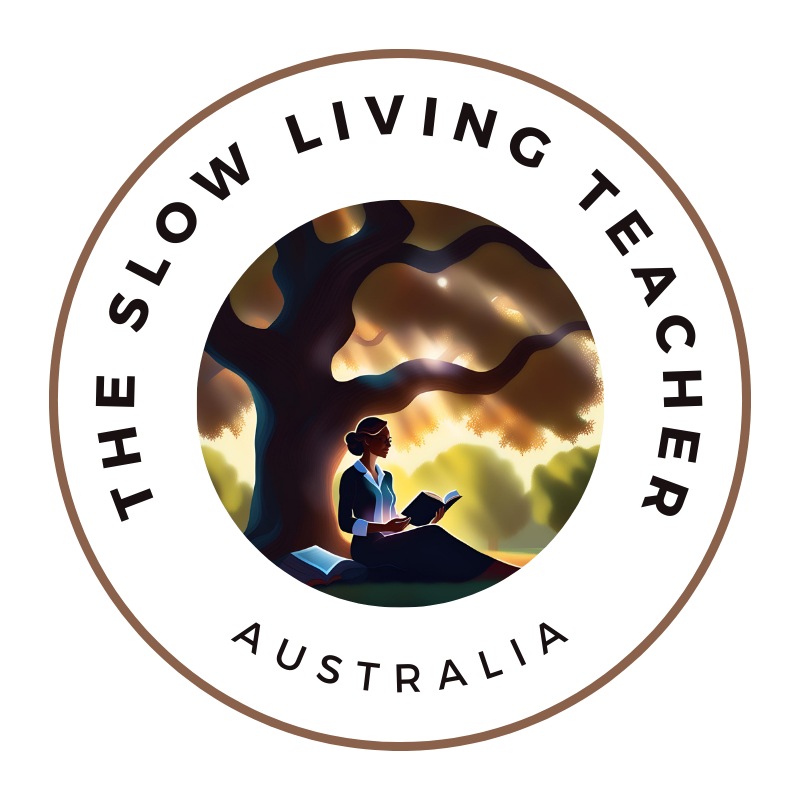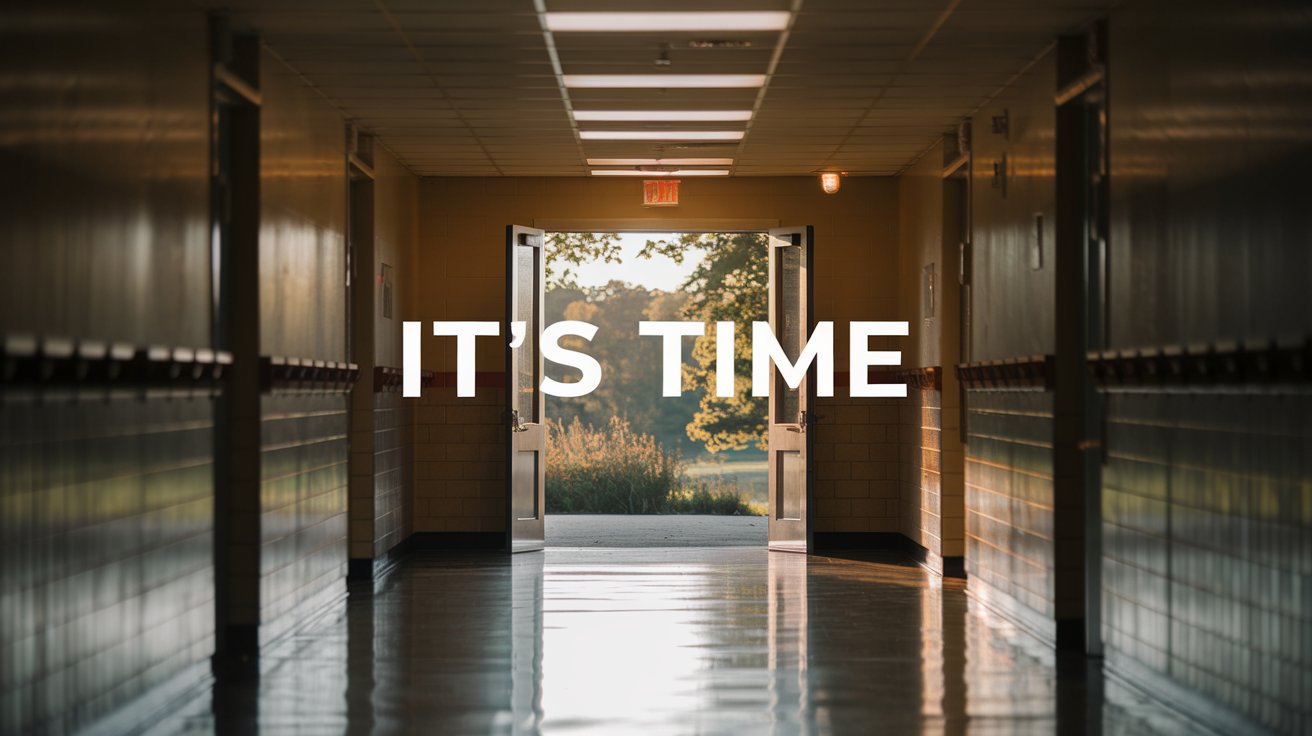Your cart is currently empty!

Mindful Breathing: A Path to Calm and Focus
Discover how mindful breathing can help you find calm and focus in just a few minutes a day. Perfect for busy teachers seeking balance. Learn practical steps to reduce stress and improve concentration with our easy-to-follow guide.
This post may contain affiliate links. At no cost to you, I may earn a small commission if you click on any affiliate link within my blog. Some of the content on this website was created with the help of AI.
Imagine this: you’re in the middle of a chaotic day, juggling tasks, and feeling overwhelmed. Then, you take a moment to focus on your breath. Inhale deeply, exhale slowly. Suddenly, the noise fades, and you feel a sense of calm wash over you. This is the power of mindful breathing.
Mindful breathing has been my anchor during some of the most stressful moments in teaching.
When the pressure of endless lesson planning, student needs, and administrative tasks becomes overwhelming, I pause and take slow, intentional breaths. Just a few deep inhales and exhales bring me back to the present, helping me reset before stepping into the next class or winding down after a chaotic day.
But beyond the classroom, mindful breathing has also transformed my nights. Instead of lying awake, replaying the day’s events or worrying about tomorrow, I use a simple breathing technique – I just count my breaths. This gentle rhythm soothes my nervous system, slows my racing thoughts, and eases me into restful sleep. It’s a small practice with a big impact, offering calm in the classroom and peace at night.
Mindful breathing is more than just taking breaths, it is the act of paying attention to your breath in the moment. By noticing the natural rhythm of your breath, you anchor yourself to the here and now, reducing stress and anxiety. It doesn’t require complicated techniques; simply noticing the sensation of air entering and leaving your nostrils can be transformative.
Even a few minutes a day can make a difference. This simple practice involves focusing on your breath to stay present.
For busy teachers, mindful breathing can be very helpful day to day. It helps transition from a stressful work mindset to a calm, focused state. Whether you’re preparing for a lesson or unwinding after a long day, it offers a simple yet powerful way to find balance.
Key Takeaways
- Mindful breathing helps reduce stress and anxiety by focusing on the present moment.
- It doesn’t require special techniques, just awareness of your breath.
- Regular practice can lower heart rate and improve emotional well-being.
- Even a few minutes daily can enhance mental clarity and focus.
- It’s a simple, effective tool for busy professionals to find calm.
The Origins and Evolution of the Practice
With roots in Buddhism, mindful breathing has evolved into modern techniques. Research shows its benefits in stress reduction. It’s now used globally for mental clarity and well-being.
| Era | Practice | Description | Benefit |
|---|---|---|---|
| Buddhist Era | Meditation | Focused on breath awareness for inner peace. | Reduced stress and anxiety. |
| Modern Times | Mindful Breathing | Adapted for quick stress relief. | Improved focus and calm. |
This practice helps teachers shift from classroom stress to calm. Start with short exercises to anchor your awareness and find balance.

The Science Behind Mindful Breathing
Mindful breathing is more than just a simple exercise; it’s backed by scientific research that highlights its profound effects on both the body and mind. By focusing on your breath, you can trigger positive physiological and psychological changes that enhance overall well-being.
When you practice mindful breathing, your body responds by lowering cortisol levels and heart rate, which are both indicators of stress. This practice also improves heart rate variability, a marker of emotional resilience. Mentally, it helps calm the mind, reducing anxiety and improving focus.
Research Insights and Key Studies
Studies by Fogarty et al. (2019) and Tang et al. (2007) demonstrate that mindful breathing sessions lead to significant reductions in anxiety and improvements in heart rate variability. These studies used rigorous methodologies, including randomized controlled trials, to show that even short periods of breath awareness can have a positive impact on both mood and concentration.
- Reduces stress and anxiety by focusing on the present moment.
- Lowers heart rate and cortisol levels, promoting relaxation.
- Improves focus and mental clarity through regular practice.
- Acts as a natural antidote to negative thought patterns.
These findings underscore the effectiveness of mindful breathing as a tool for enhancing both mental and physical health, supported by credible scientific research.

Benefits of Mindful Breathing for Mind and Body
Mindful breathing offers a powerful way to enhance both mental and physical health. By focusing on your breath, you can create a sense of calm and clarity in just a few minutes a day.
Stress Reduction and Improved Concentration
When stress builds up, it can cloud your mind and make it hard to focus. Mindful breathing steps in by giving you a simple tool to calm your mind. Studies show that regular practice can lower stress levels and improve concentration. By taking just a few minutes each day to focus on your breath, you can create a clearer, more focused mind.
Enhancing Mental and Physical Wellbeing
Mindful breathing does more than just calm the mind. It also benefits the body. It can lower heart rate and reduce tension, creating a state of deep relaxation. This practice helps break negative thought cycles and stabilizes emotions, leading to better overall health. For teachers, who often juggle many tasks, this can be especially helpful in managing classroom stress and finding balance.
By incorporating short breathing sessions into your daily routine, you can experience these benefits firsthand. Whether you’re preparing for a lesson or unwinding after a long day, mindful breathing offers a simple yet effective way to find calm and clarity.

Mindful Breathing Techniques for Stress Relief
Breathing is something we all do every day, but doing it with intention can make a world of difference. These techniques are designed to help you find calm, even on your most hectic days.
Simple Inhale-Exhale Method
Find a quiet, comfortable spot to sit. Close your eyes and take a deep breath in through your nose for a count of three. Let your chest and belly rise as the air fills your lungs. Then, exhale slowly through your mouth for a count of four. Repeat this a few times, focusing only on the sensation of the breath moving in and out of your body.
As you practice, let go of any thoughts. Just be present with each inhale and exhale. This simple exercise can help you relax and clear your mind, making it easier to focus on what needs to be done.
Exaggerated Breathing for Immediate Calm
When you need to calm down quickly, try this exaggerated breathing technique. Inhale deeply through your nose for three seconds, filling your lungs completely. Hold your breath for two seconds, then exhale slowly through your mouth for four seconds. This pattern can help slow down your heart rate and bring a sense of calm almost immediately.
Imagine you’re in the middle of a stressful moment at school. Taking just a minute to do this breathing exercise can help you regain control and respond to the situation more calmly. It’s a powerful tool to have in your stress-relief arsenal.
- Practice the simple inhale-exhale method during breaks to stay centered.
- Use the exaggerated breathing technique when you feel overwhelmed.
- Experiment with both methods to see which works best for you.
By incorporating these breathing exercises into your daily routine, you can manage stress more effectively and maintain a sense of balance, even on the busiest days.

How to Get Started with a Daily Practice
Starting a daily mindful breathing practice is simpler than you might think. It begins with creating a conducive environment and adopting the right posture. By dedicating just a few minutes each day, you can cultivate a sense of calm and clarity.
Finding Your Ideal Posture and Environment
To begin, find a quiet, comfortable space where you can sit without distractions. Consider using a cushion on the floor or a chair with proper back support to maintain good posture. Sit with your spine straight, feet planted firmly on the ground, and hands resting gently on your lap. This posture helps you stay alert and focused while allowing your body to relax.
Consistency is key. Choose a specific time each day, such as first thing in the morning or right after work, to dedicate to your practice. Even one minute of focused breathing can make a difference. Experiment with different environments until you find what works best for you, whether it’s a peaceful corner in your home or a serene outdoor spot.
- Start small: Even one minute of focused breathing can be beneficial.
- Be consistent: Choose the same time each day to build a habit.
- Experiment: Find the environment that helps you feel most calm and centered.
By incorporating these simple steps into your routine, you can create a foundation for a daily practice that supports your overall well-being and helps you stay grounded throughout the day.
Tips for Incorporating Mindful Breathing into Your Routine
Making mindful breathing a part of your daily routine can be simple, even with a busy schedule. The key is to create a consistent practice that fits seamlessly into your life.
Creating a Consistent Schedule
Start by setting aside specific times each day. This could be first thing in the morning, during a break at work, or right before bed. Consistency helps build the habit and makes it easier to stick with the practice over time.
- Use calendar alerts to remind yourself to take a few minutes for breathing exercises.
- Pair your breathing practice with daily activities, like right after brushing your teeth or before eating lunch.
- Start small – just one to two minutes a day can make a difference.
Leveraging Mindfulness Apps and Tools
Mindfulness apps can be a great resource to guide your practice and keep you on track. Apps like MyLife and Stop, Breathe & Think offer structured exercises and reminders to help you stay consistent.
Wellness experts recommend these apps for their user-friendly interfaces and variety of breathing techniques. They can help you find calm, even on your most hectic days.
- Download a mindfulness app and explore its features to find what works best for you.
- Use guided sessions to help you stay focused and avoid distractions.
- Track your progress to see how your practice evolves over time.
By incorporating these tips into your routine, you can make mindful breathing a natural part of your day. Remember, the goal is to find calm and clarity, not to add another task to your to-do list. Start small, stay consistent, and watch how this simple practice can transform your life.
Overcoming Common Challenges in Mindful Breathing
Like any practice, breath awareness comes with its own set of challenges. Whether it’s a wandering mind or difficulty staying focused, these obstacles can feel frustrating. But with the right strategies, you can navigate these challenges and deepen your practice.
Managing a Wandering Mind
One of the most common hurdles is a mind that drifts away from the breath. Mindfulness experts recommend gently labeling distractions “thinking” or “wandering”. This can help steer your focus back. When you notice your mind drifting, acknowledge the thought without judgment and gently bring your attention back to your breath. This process isn’t about perfection, it’s about kindness and patience with yourself.
Adjusting Techniques for Better Focus
To enhance concentration, try adjusting your breathing techniques. For example, you can count your breaths – inhale for a count of three, exhale for a count of four. This simple method provides a mental anchor, helping you stay focused. Another approach is to use a “body scan” during your practice, paying attention to how the breath moves through your body. These small adjustments can make a big difference in maintaining your focus.
| Technique | How It Helps | Benefit |
|---|---|---|
| Counting Breaths | Provides a mental anchor, reducing mind wandering. | Improves concentration and focus. |
| Body Scan | Helps you connect with physical sensations of breathing. | Enhances mindfulness and relaxation. |
Remember, the goal isn’t to force your mind to stay still but to gently guide it back when it wanders. With consistent practice, you’ll find it easier to maintain focus and enjoy the benefits of mindful breathing.
Practical Applications in Daily Life
For educators, the classroom can be a high-pressure environment, making it essential to find effective ways to manage stress. Mindful breathing offers a simple yet powerful tool to help teachers maintain balance and composure, even during the most hectic days.
Stress Management Strategies for Teachers
Teachers often face unique challenges, from managing classroom dynamics to meeting tight deadlines. Incorporating mindful breathing into daily routines can provide a much-needed reset, helping to reduce stress and improve focus.
- Classroom Transitions: Use brief breathing exercises between lessons to create a calm atmosphere and refocus students.
- Personal Stress Relief: Take a few minutes during breaks to practice deep breathing, helping to clear your mind and recharge.
- Work-Life Balance: Transition smoothly from work to home by practicing breathing exercises during your commute or right after school.
By integrating these strategies, teachers can create a healthier work-life balance and approach their tasks with renewed energy and clarity.

FAQ
How can mindful breathing help reduce stress?
What are the main benefits of practicing breathing exercises?
How do I start a daily breathing practice?
What if my mind wanders during breathing exercises?
Can breathing techniques be used in everyday situations?
How does breathing affect heart rate?
Conclusion
As we’ve explored throughout this article, the simple act of focusing on your breath can have a profound impact on both your mental and physical well-being. By dedicating just a few minutes each day to mindful breathing, you can reduce stress, improve focus, and create a sense of calm that stays with you throughout your day.
The techniques and strategies outlined here are designed to be practical and easy to incorporate into even the busiest of schedules. Whether you’re practicing the simple inhale-exhale method or using one of the more structured techniques, the key is consistency. Remember, the goal isn’t perfection. You just need to take small, intentional steps toward a calmer, more focused life.
For teachers, mindful breathing can be especially powerful. It offers a way to manage the unique challenges of the classroom while also providing a tool for personal stress relief. By making this practice a part of your daily routine, you can create a healthier work-life balance and approach your work with renewed energy and clarity. So why not take the first step today? Your mind, body, and students will thank you.
 Skip to content
Skip to content


